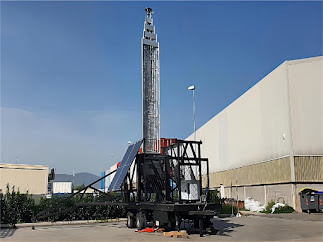The Advantages of Using Steel Poles over Wooden or Concrete Poles for Transmission Lines
Using steel poles for transmission lines offers several advantages over wooden or concrete poles. Here are some of the key benefits of using steel poles: 1. Strength and Durability: - Steel poles are extremely strong and have a high strength-to-weight ratio compared to wooden or concrete poles. - Steel poles can withstand higher wind loads, ice loads, and other environmental stresses, making them more durable and reliable in challenging conditions. 2. Longevity and Low Maintenance: - Steel poles have a longer lifespan compared to wooden poles, as they are not susceptible to rot, decay, or termite damage. - Steel poles require minimal maintenance over their lifetime, reducing operational costs and the need for frequent inspections and replacements. 3. Fire Resistance: - Steel poles are non-combustible and offer better fire resistance compared to wooden poles, making them a safer option in areas prone to wildfires. ...





